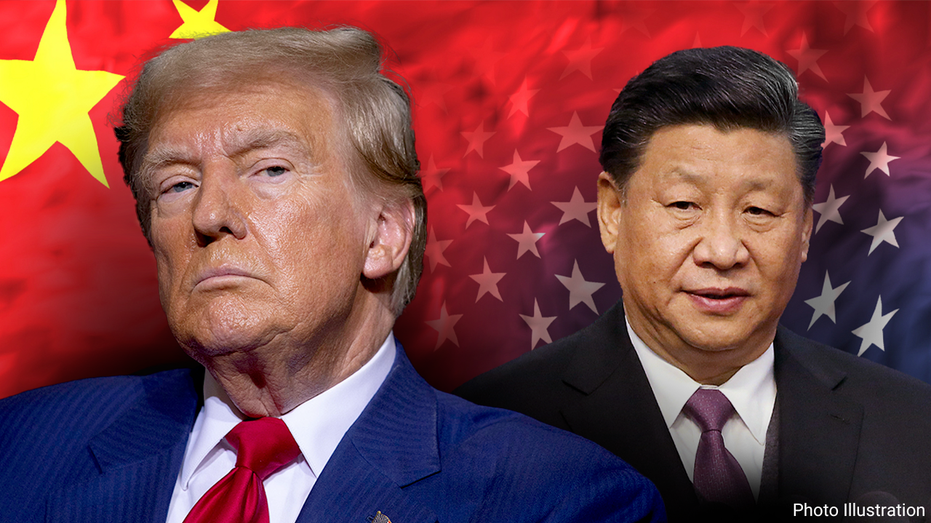The real breakthrough in U.S.China trade talks is much bigger than just tariffs
The United States and China recently announced a significant easing of tariffs, with both countries agreeing to reduce duties for a 90-day window. The financial press lauded the move. Stocks rallied. Headlines proclaimed relief in a trade war that has dragged on and weighed heavily on global markets. But while most fixated on the immediate impact of slashed tariffs, the more meaningful development went largely unnoticed.Quietly, Washington and Beijing agreed to establish a formal "trade consultation mechanism," a permanent bilateral platform to hold structured talks on currency policies, market access, and non-tariff barriers. While bureaucratic in tone, this institutional move may prove to be the most consequential economic shift in years.TRUMP SAYS CHINA DEAL WILL OPEN UP MARKET FOR US BUSINESSESThats because this isnt just about trade logisticsits about the foundation of the global economic system. The U.S.China imbalance isnt simply a matter of bad trade deals or American overconsumption. Its a structural problem embedded in the international monetary framework, and for the first time in a generation, both countries appear ready to talk about it seriously.This deeper imbalance is something Stephen Miranwho now serves as chair of the Presidents Council of Economic Adviserslaid out in extraordinary detail in a 41-page report published in November 2024. Titled "A Users Guide to Restructuring the Global Trading System," the paper explains how the current dollar-centric model locks the United States into persistent trade deficits while encouraging surplus economies like China to underconsume and overproduce. These excess savings are then recycled into U.S. financial assets, particularly Treasuries, which props up the dollar and erodes American manufacturing.The result? A lopsided economic order where the U.S. acts as consumer of last resort and global debtor-in-chief, while countries like China flood the world with goods but face chronic domestic stagnation.Miran calls this a "Triffin World," referencing economist Robert Triffins famous dilemma: When a national currency is also a global reserve, it eventually becomes impossible to balance domestic and international obligations. To satisfy global demand for safe assets, the U.S. must run deficits, which hollow out its own economy. Meanwhile, surplus nations avoid necessary reforms at home because the system rewards their export-heavy models.In theory, tariffs are a way to push back against this imbalance. But theyre crude and often counterproductive. What Miran proposes is a structural recalibrationrealigning currency values to reflect underlying economic conditions, discouraging excessive reserve accumulation, and encouraging more balanced capital flows.The fact that this new U.S.China mechanism explicitly includes discussions on currency and non-tariff measures suggests that Mirans framework is already influencing policy. This is more than a dtenteits the first real move to unwind Bretton Woods II.Its also important to understand what happens when imbalances like these are allowed to persist. History shows that unresolved economic distortions tend to escalate into geopolitical conflict. In the interwar period, the failure to manage reparations and trade balances led to a deflationary spiral in Europe. Germanys economy collapsed under the weight of austerity and fixed exchange rates, leading to widespread unemployment, social unrest, and ultimately, war.Were not there yetbut the warning signs are clear. Chinas property crisis and slowing growth show the limits of its export model. The U.S., meanwhile, faces mounting deficits, political polarization, and industrial decline. Neither side can afford to ignore the systemic flaws any longer.Thats why the new committee matters. For the first time, Washington and Beijing are signaling a willingness to move beyond tactical measures and engage in structural dialogue. It may not grab headlines, but for those paying attention, its a major pivot.Critics will say that this is just another diplomatic forum. But theres reason to believe its more. Mirans appointment to the top economic advisory post in the White House indicates that these ideas have currency at the highest levels. And the alignment between his policy prescriptions and the scope of the new committee is hard to ignore.CLICK HERE FOR MORE FOX NEWS OPINIONTo be clear, none of this will be easy. The system didnt get here overnight, and it wont be unwound quickly. But the creation of this platform is a start. It acknowledges the real root of global trade tensions, not as a battle between exporters and importers, but as a distortion of incentives baked into the architecture of international finance.The United States must seize this opportunity. Rather than settling for symbolic tariff victories or short-term market gains, we should push for a durable framework that restores balance, rewards production at home, and disincentivizes dependency abroad.In that sense, this may be one of the clearest examples of President Trumps "Art of the Deal" approachfirm on leverage, clear-eyed on outcomes, and willing to tackle problems at the root rather than the surface.So, while the tariff cut got the headlines, the real story lies in this committeea forum that could, if used wisely, become the place where the next phase of global economic order is quietly drafted.In the end, America cannot remain strong abroad if its structurally weakened at home. This agreement gives us a chance to begin rewriting that script.And thats a deal worth making.CLICK HERE FOR MORE FROM TANVI RATNA




